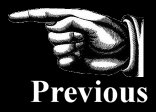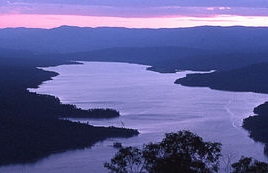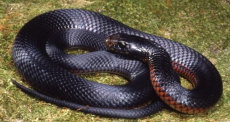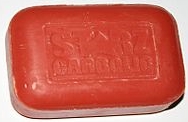
Contact

Home
H. J. McCooey part 11
Yowie / Bigfoot


The Sydney Morning Herald (NSW)
Date: September 4, 1891
Page Number: 2

The Sydney Morning Herald (NSW)
Date: October 5, 1891
Page Number: 9

October 19, 1891 - DO SNAKES SWALLOW THEIR YOUNG?
TO THE EDITOR OF THE HERALD.
Sir,—With your permission
I would like to say a few words with reference to Mr M'Cooey's letter on the above subject. Apart from my written articles on the
subject of snakes I can lay fair claim to be on a level with any man in Australia in prosecuting researches in connection with snake
life. I have come across hundreds of reptiles in the bush at all times of the year, and have killed scores and scores in all stages.
In a state of captivity, for a number of years I have had an extensive experience with venomous and non-venomous snakes. Yet not withstandmg
all this, I have never seen a snake "swallow" its young, and I place myself among the unbelievers. Evidences pointing to snakes swallowing their
young are many, and from sources that are entitled to respectful attention , but the most curious fact that stands out prominently
is, that no single instance is on record when a killed snake, with the young in its inside (that had been observed to swallow its
young by the destroyer of the snake) has ever been brought for dissection to any scientific man.
I have for
years and years had a standing reward for such a specimen, or for specimens with young snakes inside the parent, but up to the present
hour, notwithstanding innumerable promises both for and without reward, not a single specimen has reached my hands. Mr. M'Cooey killed
the snake that he saw swallowing its young, but the specimen was never brought to the front or placed before the Linnean Society,
of which he is a member, so that an investigation could have been made. Following a letter of Mr M'Cooey's in the Herald of August
20, 1889, I wrote a letter in your journal the following day, giving a extract from a paper read before the Royal Colonial Institute
by the Chief Justice of Tasmania, who wrote "that the Curator of the Museum of the Royal Society took more than 100 young snakes from
the body of one that was killed, and that he himself had taken 31 young ones from a snake he had killed." Now, I know, and knew full
well at the time of writing that letter what kind of "snakes" these 100 and 39 were, but up to the present time that letter remains unanswered.
I now for the first time state, without the slightest hesitation, from a long and patient study, that these 100 and 39 so-called "youngsnakes" were nothing more or less than intestinal worms. I have had these "worm-snakes" brought to me scores of times as young snakes,
and in argu- ments on this subject, when showing these worms, bushmen and others recognised them as the "young snakes" they had often
cut out of the bodies of snakes. Mr M'Cooey, in his letter of August 20, 1889, puts himself completely away by saying, "I cannot re- member
finding less than 18 or more than 52" (young snakes in the bodies of full-grown snakes dissected by him). If Mr M'Cooey will give
me the sizes, or as near to as he can, of the 52 young snakes he cut out of the body of the snake referred to in his letter I will
undertake to prove they were no snakes at all. I am, &c.,
October 17.
JAMES S.
BRAY.
TO THE EDITOR OF THE HERALD.
Sir,—Will you please grant me space in your valuable
paper to refer to the subject mentioned above ? I am perfectly satisfied that Mr McCovey is correct in saying that he has seen snakes
swallow their young, and Mr. J. S. Bray is wrong in contradicting that statement. I have seen snakes swallow their young ones many
times, both in Texas and Louisiana in America. Some 45 years ago. in the township Mauna, where I lived, going one morning, between
11 and 12 o'clock to the spring, in the path, in the sun, lay a snake about 6ft long ; before her were her young ones playing. When
she heard my footsteps she opened her mouth and hissed, all the young snakes went down into her body, and she was then only about
5ft long, with a thick body. I killed and opened her, and took out 17 small snakes between 4in and 5in long, which I killed also I
am surprised that more persons have not seen similar cases. A great many people do not know that the snake lays eggs, and they are
hatched in sand the same as turtlel eggs. I write this for the information of the Linnean Society, and the public in general.
I am.&c,
A. L. NELSON
Bray questions the veracity of McCooey's claim that snakes swallow their young.
The Sydney Morning Herald (NSW)
Date: December 2, 1891 (& December 29)
Page Number: 1

The Sydney Morning Herald (NSW)
Date: December 30, 1891
Page Number: 1

...
Mr. H. J. M'Cooey, the naturalist, is in Burragorang, and has collected a number of excellent ethnological and
zoological specimens.
...


The Sydney Morning Herald (NSW)
Date: February 17, 1892
Page Number: 1
View of the Burragorang Valley.


A LEGLESS LIZARD.
The Sydney Morning Herald (NSW)
Date: March 29, 1892
Page Number: 3

PROPOSED INJUSTICE TO ABORIGINES AT BURRAGORANG.
The Sydney Morning Herald (NSW)
Date: September 10, 1892
Page Number: 7
...
Sir,—I desire, with your kind permission, through the medium of the Herald, to draw the attention of the Minister for Lands to an uncharitable and discreditable movement which has been set on foot at Upper Burragorang, which, if successful, will deprive a number of honest, industrious aborigines of a home.
...

The Sydney Morning Herald (NSW)
Date: October 6, 1892
Page Number: 5
IN the Herald recently there appeared a letter signed by H. J. M'Cooey complaining that injustice had been done to some aboriginals at Burragorang. The letter set out that a reserve of 200 acres of land was to be taken away from them. The Minister for Lands (Mr Copeland) made inquiry into the matter and found that 99¾ acres of land had been reserved in the parish of Wingecarribee in the interests of an aboriginal named Annie Skarratt, but subsequent representations showed, that this reservation did not cover the lands she desired, and consequently another piece of land comprising 60 acres, in the parish of Peaks, in the same neighbourhood, was reserved from sale for the use of the aboriginals, and there is therefore no grievance to complain about.

The Sydney Morning Herald (NSW)
Date: October 17, 1892
Page Number: 5
A correspondent telegraphs to us from Goulburn as follows :—Mr. H. J. M'Cooey, the naturalist, was yesterday morning, while putting a young black snake into a bottle, bitten by the reptile four or five times on the index finger of the right hand. Although the reptile, which Mr M'Cooey said was a pseudechis, a very venomous kind, bit Mr M'Cooey several times, in four instances drawing the blood, still he kept hold of it, and placed it in a bottle. Beyond applying a ligature and washing his hand with salt water and carbolic soap, Mr M'Cooey applied no other remedies. Half an hour afterwards, Mr M'Cooey fainted, but soon rallied, and attributed his swooning to weakness arising from a recent sickness, and not to snakebite. The snake was 11in. long, black-and-red bellied. Six hours after being bitten, Mr. M'Cooey seemed none the worse.



Carbolic soap is a mild disinfectant soap containing carbolic acid (phenol). By killing bacteria, it acts as a mild deodorant when used as a body soap.
Ligature - A thing used for tying or binding something tightly.
The Sydney Morning Herald (NSW)
Date: October 17, 1892
Page Number: 3

Australian Town and Country Journal (NSW)
Date: November 12, 1892
Page Number: 21
A strange specimen of white bird, about the size of a farmyard fowl, was found near Kangaroo Valley on October 30. Mr. H. J. M'Cooey pronounced it to be an albino of the lyre bird, Menura superba.
...
But the most remarkable kind of a snake we have heard of for some time was killed by Mr. Stace, the blacksmith a
few days ago. We have the assurance of himself and his son that this is no "tarradiddle." The reptile was about fifteen inches long,
and it had two regularly formed heads ; not together, as might be supposed, but one head at each extremity. When attacked it wriggled
away until stopped by Stace, when it simply began to run in the opposite direction without turning round. Unfortunately for the interests
of natural science the animal was killed and destroyed by fire, the captor being under the impression that a two headed snake was
not a phenomenon. What a chance Mr. Bray or Mr. McCooey missed ! And now they will probably disbelieve the story. To all doubters,
we say, for further particulars apply to Mr. Stace or his son.
Tarradiddle:
1. A petty falsehood; a fib.
2. Silly pretentious speech or writing; twaddle.

The Sydney Morning Herald (NSW)
Date: December 19, 1892
Page Number: 3

...
Would the gentleman above named kindly inform the public his reason for using such
a remedy, and if possible its action against the poison of the snake. By doing so he will confer a great boon upon many...
In the interest of some poor unfortunate that may have the misfortune to be bitten by a venomous
reptile, and as the season for reptiles is upon ns, I think it my duty to say a few words with reference to Mr. M'Cooey's paragraph
in your issue of Monday last... During the last month or so we have had a medical gentleman at the late Medical Congress give vent
to an expression or opinion "that a strong, healthy adult will recover from the bite of even our most venomous Australian species
without the aid of treatment of any kind." And now Mr, M'Cooey comes upon the scene and talks of washing his hand with carbolic soap
in salt water as a cure for the bite of our venomous black snake! Up to the time these two gentlemen burst upon us, how we have been
groping in the dark and indulging in the idea that our Australian venomous snakes were amongst the most to be dreaded on earth. Cures
for snake bite! Positive cures! Why, they outnumber the whole of the venomous snakes known to the scientific world. And yet throughout
the world where venomous snakes exist thousands die every year through snakebite, and will continue to do so, notwithstanding all
the "positive cures." So far as Australia is concerned the death rate will, I fear, be greater than hitherto if Dr. Huxtable's theory
given expression to at the late Medical Congress, is believed in, or the carbolic soap and saltwater cure of Mr. M'Cooey's is taken
any notice of. I am more than surprised that "A Medical Student" should for a moment have lost sight of the fatal points as against
carbolic soap and salt water cure in cases of actual snakebite—namely, penetration of fang and absorption of venom. It is curious,
to say the least, that Mr. M'Cooey's account fails in the usual accompaniment—that of the Latin or scientific name of the reptile.
This neglect is very curious, especially when it is stated that he (Mr. M'Cooey) was trying to put the snake into a bottle and was
bitten four or five times on the index finger. Perhaps our friend Mr. M'Cooey is snake proof. A year or two ago this gentleman in
one of his press contributions gave forth "that if a person bitten by a venomous reptile were to hold the bitten part in running water
a cure would be effected." The late Gerard Krefft and Sir William Macleay, both naturalists of the highest order were of opinion "that
notwithstanding the notices from time to time of wonderful cures of bites of our venomous reptiles, a true bite from such snakes as
the black, brown, tiger, or deathadder required every effort and the most skilful of trearment to effect a cure, if, indeed, a cure
could be brought about. Let me, in conclusion, say stick to the old but good usage in case of snakebite—namely, immediate ligature above
the bitten part, cut out or scarify the part showing the fang or fang-marks, suck with might and main the part bitten, and then get
to a medical man as soon as you can, after partaking of a good stiff glass of whisky. That is what I did when bitten by a venomous
snake, and I am still alive.
—Yours, &c. JAMES S. BRAY.

H. J. M'COOEY ON SNAKEBITE.
Evening News (Sydney, NSW)
Date: November 3, 1892
Page Number: 3
To the Editor.
Sir,—My attention has been drawn to a letter in your issue of the 24th instant, signed "James S. Bray," in which the writer refers to my having been bitten recently by a young snake at Goulburn. I should certainly not trouble you on this subject at all only that "James S. Bray" has misrepresented me. What does he mean by "Mr. M'Cooey's paragraph in your issue?" &c. I neither wrote nor caused to be written or sent to the Evening News anything at all about the trifling bites which I received from a young Pseudechis at Goulburn on the 16th instant, nor did I even know that the matter was referred to in your paper until told so by the railway stationmaster at Wingello. Again, who informed "James S. Bray" that I stated that carbolic soap and salt and water were cures for snakebite? I never said so. If "James S. Bray" knew anything at all about Australian snakes, he would know that no Pseudecbis or other venomous Australian snake of 11in in length could injure an adult human being. Why doesn't he look up Krefft in the Public Library? When collecting for the Australian Museum I am often bitten by young snakes. I was bitten by a young Hoplocephalus (H. Nigrescens) about six weeks ago at Thirlmere and said nothing about it, and kept the trifling matter out of the papers. When bitten by young snakes I simply act as I should if bitten by a lizard, a hawk, a cat, a diamond or carpet snake, a dog, or a pig, viz., wash the bitten part thoroughly with soap and water. A poultice of common salt wetted and applied in such instances to the bitten part gives almost instant relief. But to set these simple and wholesome applications up as specifies for true cases of snakebite wouldbe absolutely and transparently absurd. Far from agreeing with Dr. Huxtable's dictum that a healthy full grown man would recover unaided by specifics or surgical treatment from the bite of any of our venomous snakes, I emphatically differ from him, and challenge him to put the matter to the test, and I undertake, free of charge, to supply him at seven days' notice with three or four full grown specimens of Pseudechis porphyriacus.
—Yours, &c,
H. J. M'COOEY.
Kangaroo Valley, October 30, 1892.





















